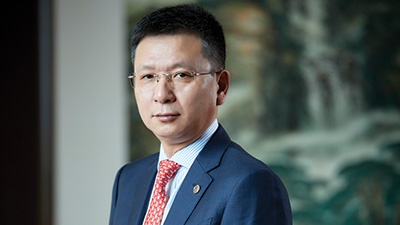China has set out targets in its fight to tackle climate change and insidious pollution, both of which threaten to undermine stability at home.
In September, president Xi Jinping said carbon emissions would peak by 2030, with carbon neutrality reached by 2060.
However, the economy got big by growing dirty. Coal is still the largest – and still the fastest growing – source of energy. Oil is second. The eye might be drawn to high-tech firms like Tencent, but big state firms, from car makers to utilities, still dominate. China will not decarbonize overnight.
This presents a challenge to the country’s banks, all of which face an uphill battle to go green.

In May, Forest & Finance, a global coalition of NGOs, crunched the data to show that between January 2016 and April 2020, Chinese financial institutions shelled out $15 billion in loans to firms linked to deforestation in southeast Asia, Africa and Brazil.
Much of this was disbursed by mainland banks – Industrial and Commercial Bank of China accounted for $2.2 billion – and to Chinese firms; chemicals group Sinochem collected $4.6 billion.
It fuelled activity in sectors ranging from pulp and paper to palm oil, and funded firms engaged in the production of soy, timber and rubber.
It can surely be no accident that, on June 14, the People’s Bank of China (PBoC) said it would grade lenders based on their environmental, social and governance (ESG) performance, starting with green loans and bonds, and building up to more complex financial instruments and investments.
The central bank will start to assess banks on July 1, with an 80% weighting for quantitative factors – such as how much green lending an institution does and how fast its book grows – and the rest a qualitative mix, including support for green industries.
Challenges
China’s banks are keenly aware of the challenges they face. When Euromoney sat down with Ping An Bank chairman Xie Yonglin this month, he refused to shy away from the tough questions.
“When it comes to ESG, we are still at the development stage,” he admitted. “As a nation, the share of energy China generates from coal is high, and the companies involved in carbon generation also need financial services. That’s why banks are still lending a lot to heavy industries.”
He adds: “China is still a developing country and there are many challenges on our plate.”
However, its banks can do, and are doing, a lot on their own volition. Xie said Ping An Bank, a financial innovator that won our award for the world’s best digital bank 2020, was committed to being an ESG leader.
We support a lot of companies helping to make China’s supply chains much greener
Xie Yonglin, Ping An
“We will strengthen our lead in green finance,” he says. “A lot of our customers are focused on areas like electric vehicles – companies such as Xpeng [an EV maker based in Guangzhou and listed in New York].”
Other companies include BYD, Nio and battery maker CATL.
“We support a lot of companies helping to make China’s supply chains much greener,” Xie adds. “We have explored areas in green finance, and cooperate with companies who are heavily involved in renewable and green energy.”
He points to the bank’s role as lead underwriter and bookrunner on China Three Gorges Corporation’s Rmb1.5 billion ($232 million) sale of carbon-neutral bonds in March. Critics, however, are divided on how green hydropower is, given the damage it can cause to downstream habitats and communities.
However, there is no doubt Ping An Bank takes seriously its commitment to sustainability. Last year, the Shenzhen-based lender set up a green finance office headed by its president Hu Yuefei.
It has pledged to expand green lending by at least 20% a year in the five years to the end of 2025. Insiders say it is “striving” to hit a target of Rmb400 billion in total green investments and green credit loans by 2025, against Rmb70 billion in 2020.
On April 21, it published a ‘Letter to the Earth’, promising to meet its green targets, to improve risk management and to fast-track lending to green projects and companies.
Mixed bag
The rest of the sector is a mixed bag. In a June 18 report, titled ‘Through the ESG lens’, JPMorgan analysts set out to assess the sustainability credentials of 14 mainland banks using 27 metrics, assigning a higher weighting to a bank’s exposure to carbon-intensive industries, and the size of its green lending book.
China Construction Bank was ranked number one, followed by Postal Savings Bank of China (PSBC), with Ping An coming in seventh and Minsheng Bank in last place.

JPMorgan’s top pick was Hong Kong- and Shanghai-listed PSBC. That was due in large part to the bank’s focus on the financially underserved and excluded in rural areas – a reminder that ESG is about more than the environment.
Another reason it ranked higher than its larger state peers was due to a factor described by the report’s authors as “national service”.
This is important. For years, Beijing has issued conflicting advice to corporate and financial institutions. Thus, it might publicly tell banks not to do business with dirty or failing firms, even as it privately expects them to carry on funding their activities.
Banks perform national service at the expense of minority shareholders’ interest
JPMorgan analysts
JPMorgan picks up on this. It noted that banks might be told to cut their fees to spur economic growth, to lend to state firms on non-commercial terms, and even be expected to bail out struggling lenders to prevent spillover financial risk.
“Banks perform national service at the expense of minority shareholders’ interest,” the authors of the report wrote, adding that it “impairs banks’ risk and control, dragging down their ‘G’ score”, and therefore their overall ESG rating.
“Arguably, all China banks are subject to some level of national-service risk, but the track record shows that the big four SOE banks are subject to higher risk than peers,” they added.
These lenders are highly exposed to coal-fired power producers, which face serious financial challenges if they cannot decarbonize. In turn, banks with the greatest exposure to these firms “may see higher asset-quality risks should some coal-fired power producers default on their loans”, the report states.
PSBC ranks highest in the ESG rankings, precisely because it has less exposure to the big utilities, so its national-service risk levels are lower.





